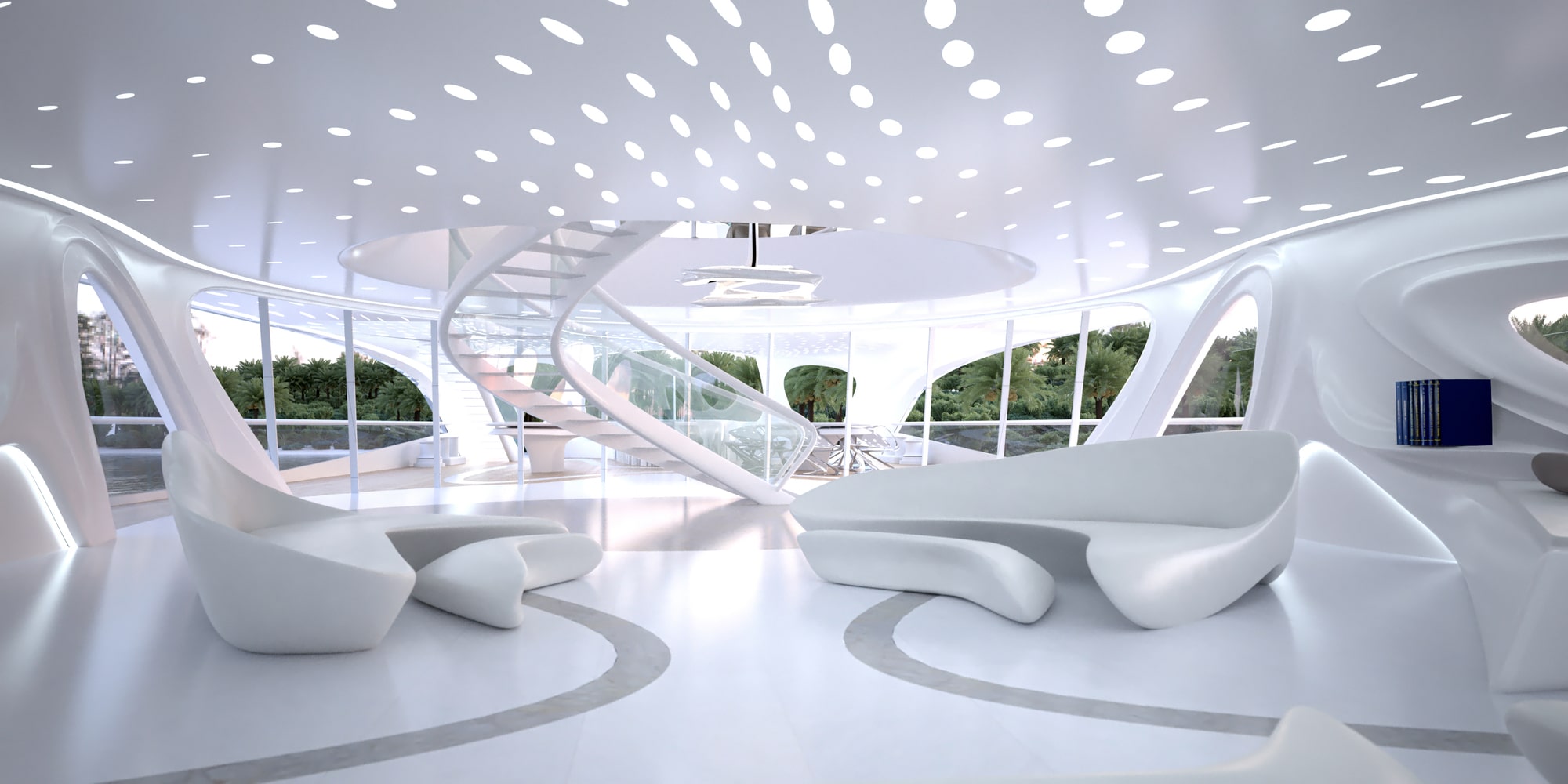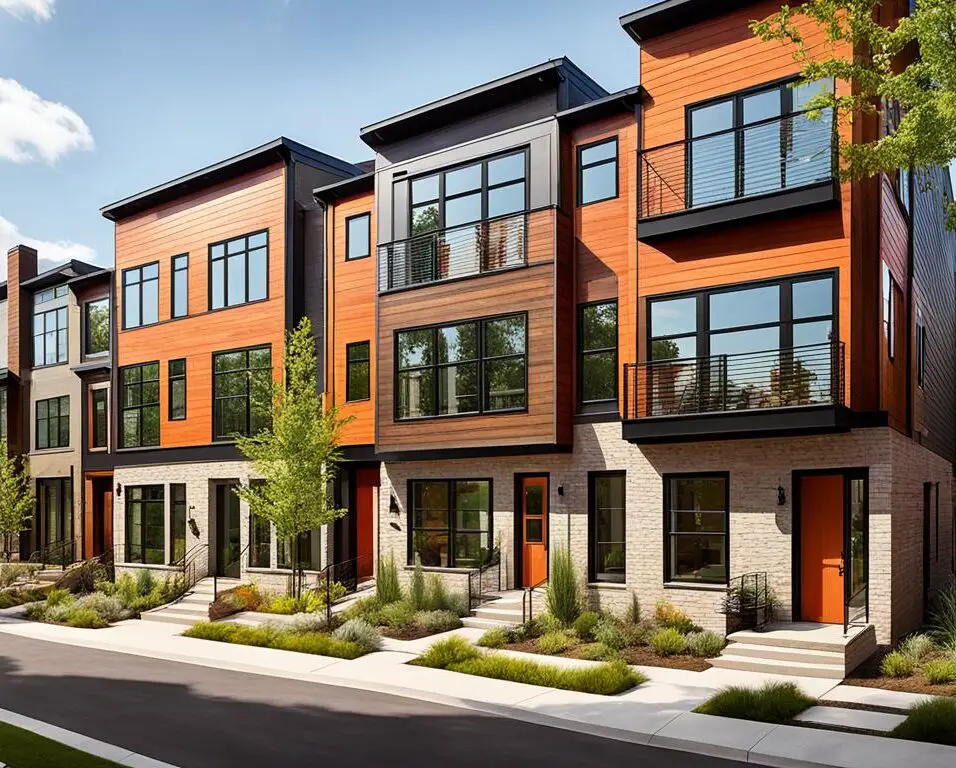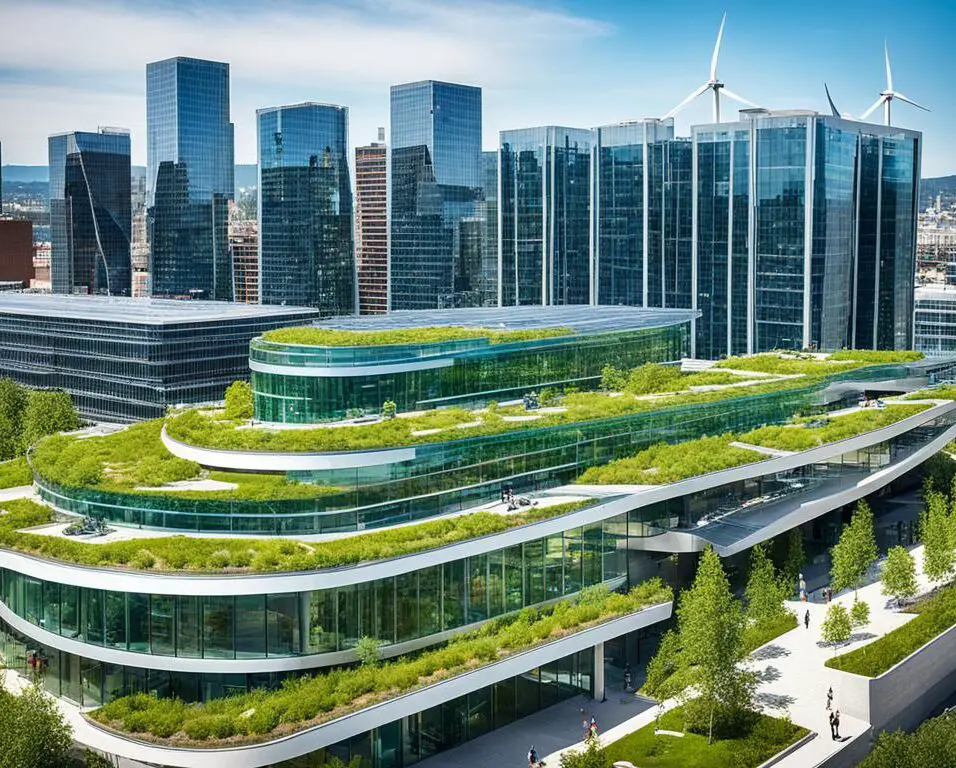Is Interior Design A Part Of Architecture
Introduction
Interior design is an integral part of the broader field of architecture, harmoniously merging aesthetics and functionality to create cohesive and engaging spaces. While architecture primarily focuses on the design and construction of buildings, interior design delves into the intricate details that shape the interiors, encompassing the arrangement of furniture, selection of materials, and creation of atmospheres.
Interior design goes beyond mere decoration, as it considers the human experience within a space. It takes into account factors such as ergonomics, spatial planning, and the psychological impact of design choices. A well-executed interior design enhances the functionality of a space while evoking emotions, providing comfort, and catering to the needs and desires of its occupants.
Collaboration between architects and interior designers is vital to achieving a holistic and integrated design. Architects lay the foundation by shaping the building’s structure, envelope, and overall form, creating the framework for the interior spaces. Interior designers then build upon this framework, transforming the interiors into engaging environments that reflect the purpose, identity, and aesthetic vision of the space.

Does Interior Design Relate To Architecture?
Interior design is a profession that focuses on architecture and space planning, creating cohesive and aesthetically pleasing designs for home interior and businesses within a built environment or existing structures.
Interior design and architecture are two closely related disciplines that often go hand in hand. While they are distinct fields, they are interconnected and mutually dependent on each other. Architecture designs and builds buildings, while interior design focuses on interior aesthetics, utility, and layout. Therefore, it can be said that interior design relates to architecture in several significant ways.
Interior design is greatly influenced by the architectural framework of a building. The structure, layout, and materials used in the construction of a building provide the foundation for the interior design process. An interior designer works within walls, columns, windows, and doors. These elements’ proportions, scale, and dimensions affect furniture, fixtures, and other interior items’ location. For instance, window size and position affect natural light, which affects lighting and window treatments.
Architecture and interior design collaborate to create a harmonious and unified design. The exterior and interior of a building should be cohesive, complementing each other in terms of style, materials, and aesthetics. A skilled interior designer takes into account the architectural style and design intent while conceptualizing and executing the interior spaces. Interior design can seamlessly integrate architecture’s materials, finishes, colors, and textures. This integration ensures a holistic design approach that enhances the overall user experience.
Which Is Better Interior Designer Or Architect?
If you’re more interested in the overall design and planning of buildings, architecture may be a better fit. If you’re more interested in designing and decorating living spaces, interior design may be the better choice. Both fields require a strong understanding of design principles and an eye for aesthetics.
Architects are primarily responsible for the overall design and construction of buildings. They have a comprehensive understanding of structural engineering, building codes, and regulations. Architects focus on the external appearance, form, and function of a structure. They consider factors such as site analysis, environmental impact, and urban planning when designing a building. They can build a project’s basis, including structural integrity, safety, & longevity.
On the other hand, interior designers specialize in creating functional, aesthetically pleasing, and livable interior spaces. They know how to choose materials, finishes, colors, lighting, and furniture to improve a space’s appearance. Interior designers are detail-oriented and understand ergonomics, human behavior, and space layout. They create a space that fits occupants’ demands while respecting the building’s architecture.
In many cases, architects and interior designers collaborate closely to achieve the best results. Architects provide the design concept and layout, while interior designers improve the internal areas to blend the exterior and interior. This collaborative approach delivers a holistic design solution that considers project macro and micro factors.
Do Interior Designers Need Architects?
Yes, an architect can do the interior design. However, it’s always best to hire an expert in interior design.
A few big deciding factors: If you’re adding or removing walls, changing staircases, installing a new kitchen or bath, or impacting the footprint, height, or grade of the home, you’ll likely need an architect—even if some builder–interior designer teams may tell you otherwise.
Interior designers and architects often work together on projects, and their collaboration can greatly benefit the overall design and functionality of a space. While interior designers are not always legally required to work with architects, there are several reasons why it is advantageous and often necessary for interior designers to collaborate with architects.
Architects provide the foundation and framework for interior design projects. They are responsible for the overall design and construction of the building, including structural integrity, building codes, and regulations. Architects ensure that the building is safe, sound, and meets all legal requirements. They consider factors such as site analysis, environmental impact, and urban planning when designing a structure. Interior designers can develop useful and visually beautiful areas that complement the overall design by working with architects to understand the building’s architectural components and limits.
Architects and interior designers have complementary skill sets. Interior designers create useful, comfortable, and attractive spaces, while architects plan, design, and build buildings. Architects and interior designers can work together to produce harmonious designs. Interior designers optimize space, choose materials, finishes, & furnishings, and improve user experience, while architects supply the architectural shell. This collaboration ensures a holistic approach to design that considers both the macro and micro aspects of the project.
Is Interior Design Harder Than Architecture?
It takes more work to break into architecture, which is reflected (although not dramatically) in average salaries; it is also much easier for a qualified architect to work as an interior designer then vice versa.
Comparing the difficulty of interior design and architecture is subjective and depends on various factors. Both professions require unique skills, knowledge, and expertise, and they have their own set of challenges. Interior design and architecture are distinct, not harder.
Architecture involves designing and constructing buildings and structures. Architects include site studies, building codes, structural integrity, & functionality when designing. They must know engineering, materials, construction, and environmental issues. Architectural projects require meticulous planning, stakeholder cooperation, and complex building processes. Architects must solve problems and design user-friendly spaces.
Interior design creates functional, beautiful, and livable spaces.Interior designers optimize space, choose materials and finishes, and create architectural harmony. They must be detail-oriented, aesthetic, and knowledgeable about color theory, lighting, furniture, & spatial design. Interior designers must also consider occupant demands, ergonomics, accessibility, & sustainability. They must be able to balance practicality with creativity and effectively communicate their design ideas to clients and other professionals.

Who Gets Paid More Architect Or Interior Designer?
Freshers can earn anything between Rs 25,000 to Rs 32,000 per month. A mid-level interior architect can earn anything between Rs 40,000 to Rs 75,000 per month. A senior or executive level interior architect can earn anything between Rs 80,000 to more than a lakh per month.
The salary of architects and interior designers can vary depending on various factors such as experience, location, specialization, education, and the type of projects they work on. It’s difficult to make a definitive statement about who gets paid more between architects and interior designers, as the earning potential can differ greatly within each profession.
Architects typically have a higher earning potential due to the extensive education, training, and responsibilities involved in their profession. They often complete an internship, a professional degree in architecture, and licensure tests. Architects earn more due to project complexity, structural design, and stakeholder coordination. Architects also often have opportunities to work on larger and more high-profile projects, which can lead to higher compensation.
Interior designers’ earning potential can vary depending on their specialization and the type of projects they undertake. Interior designers may have a range of specializations such as residential design, commercial design, hospitality design, or healthcare design. Those who work on high-end residential projects or commercial projects for prestigious clients may have higher earning potential. Interior designers with successful design firms or a good reputation can charge more.
Why Is Interior Design Important In Architecture?
Interior Design Improves Your Space
On the most basic level, a good interior design improves a space by making it better suited to its purpose. For example, if you’re designing a bedroom you will make decisions that lead to it being more relaxing. For an office, good design will make it more focused and efficient.
Architecture relies on interior design to improve utility, aesthetics, and user experience. Interior design creates well-planned and attractive interior spaces, while architecture designs and builds buildings. Here are some reasons why interior design is important in architecture:
Optimizing Space: Interior design considers the efficient use of space within a building. It involves room layout, circulation, and zoning to satisfy tenant needs. Interior designers plan areas to optimize the building’s potential and use every square foot.
Creating a Cohesive Design: Interior design matches the building’s architectural style. By matching materials, finishes, colors, & furniture to the building’s outside, it unifies the design. A well-coordinated design between the interior and exterior creates a unified and visually pleasing environment.
Enhancing User Experience: Interior design considers the needs and preferences of the occupants to create spaces that are comfortable, functional, and conducive to their activities. By understanding human behavior, ergonomics, and psychology, interior designers can design spaces that promote well-being, productivity, and enjoyment.
What Do Architects And Interior Designers Have In Common?
Let’s start with the similarities between these two fields. Experienced architects and interior designers (not the same as interior “decorators”) are qualified to create / design spaces that solve problems for homeowners. The primary way they do this is through spatial design and planning.
Architects and interior designers share several commonalities as professionals in the design industry. While their roles and responsibilities may differ, they often collaborate on projects and contribute to the creation of well-designed and functional spaces. Here are some key aspects that architects and interior designers have in common:
Design Skills: Both architects and interior designers possess strong design skills. They have a keen eye for aesthetics, a sense of proportion, an understanding of color theory, and the ability to create visually appealing spaces. They are trained to think creatively and translate concepts and ideas into tangible designs.
Spatial Planning: Architects and interior designers both engage in spatial planning. They understand how to optimize space, create efficient layouts, and consider the flow and circulation patterns within a building. They take into account factors such as functionality, ergonomics, and user experience to ensure that the spaces they design are practical and well-utilized.
Building Codes and Regulations: Both professionals are knowledgeable about building codes and regulations. They understand the legal requirements and safety standards that must be met when designing and constructing a building. Whether it’s accessibility regulations, fire safety codes, or zoning restrictions, architects and interior designers need to navigate and comply with these regulations to ensure the project’s compliance.
How Do Architecture And Interior Design Collaborate?

Architecture and interior design professionals often collaborate closely to ensure a cohesive and harmonious result. Architects and interior designers work together during the initial stages of a project to understand the functional requirements, spatial needs, and design goals. They coordinate their efforts to create a unified design scheme that integrates the external and internal aspects of a building.
Interior design collaborate closely to create cohesive and well-designed spaces. Their collaboration involves a seamless integration of the exterior and interior aspects of a building, ensuring a harmonious and functional design solution. Here are some ways in which architecture and interior design collaborate:
Concept Development: Architects and interior designers collaborate from the early stages of a project to develop the design concept. The architects establish the overall vision, form, and structure of the building, taking into account factors such as site analysis, context, and client requirements. Interior designers work with the architectural concept to understand the spatial constraints, design intent, and aesthetic direction. They contribute their expertise to refine and enhance the interior spaces, ensuring that the overall design concept is carried through.
Space Planning: Architects and interior designers collaborate on space planning to optimize the layout and functionality of a building. Architects provide the architectural framework, determining the placement of walls, columns, windows, and doors. Interior designers then work within this framework to plan the arrangement of rooms, circulation patterns, and zoning of the interior spaces. They consider factors such as traffic flow, accessibility, and the specific needs of the occupants to create well-designed and functional interior layouts.
Material and Finish Selection: Architects and interior designers collaborate on selecting materials and finishes that complement the overall design and meet the functional requirements. They consider factors such as durability, aesthetics, sustainability, and budget constraints. The architects may select materials for the exterior facade, while interior designers choose finishes for walls, floors, ceilings, and other interior surfaces.
Conclusion
Interior design is undeniably an integral part of architecture. While architecture focuses on the design and construction of buildings, interior design complements and enhances the architectural framework by creating functional and aesthetically pleasing interiors. The collaboration between architects and interior designers is essential in achieving a holistic and integrated design that considers both the exterior and interior aspects of a structure.
Interior design goes beyond mere decoration, as it takes into account factors such as ergonomics, spatial planning, and the psychological impact of design choices. It shapes the functionality, atmosphere, and ambiance of a space, ensuring that it caters to the needs and desires of its occupants. From residential dwellings to commercial spaces and public institutions, interior design plays a vital role in creating environments that facilitate human interaction, productivity, and well-being.
Moreover, interior design adapts spaces to meet the evolving needs of users. It takes into consideration changing trends, technology advancements, and sustainability principles to create spaces that are both timeless and adaptable. By utilizing innovative materials, smart technology, and sustainable design practices, interior designers contribute to the longevity and relevance of architectural spaces.








